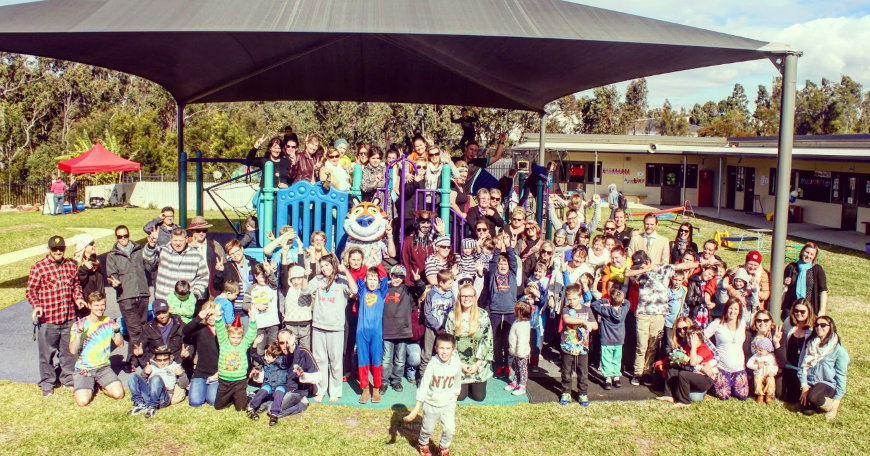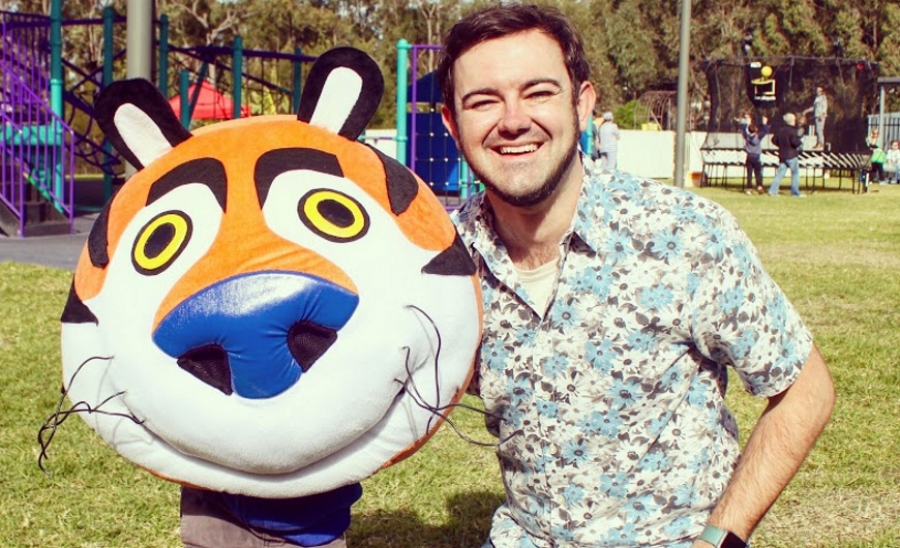There is a side to teaching in special education that very much focuses on being very orderly and sensible, following a model of structured teaching, balanced and moderate with a gentle voice and no sudden movements, keeping the excitement levels down so as to maintain a focused and settled classroom environment. And, as with everything, there is also a flip side, where moderation is flattened out and tossed into the air like a twirling pancake, where classroom structure is deconstructed into some cloudscape of puzzle pieces that were never intended to fit together, and unbridled laughter is the lesson for the day.
There is very limited research and anecdotal work into how the world of humour"We refer to ourselves as Edutaining Behaviour Detectives." and special education intersect, but so far as my colleagues and I go, working in a school for children on the autism spectrum, we have a very special reverence for the power of the joke in helping us establish the most beneficial learning environments for our students.
In our school, we think about autism through a lens of ‘a different brilliant’. Our students have such unique ways of framing and interacting with the world, and we feel a significant responsibility to providing our students with the sort of education that allows them to embrace their brilliance and be the different change they want to experience in an ever-changing different world. We refer to ourselves as Edutaining Behaviour Detectives. On the one hand we absolutely embrace the necessity of structure and careful research as we investigate and establish solutions for behavioural needs our students might have, but on the other hand we hold high the flag of the edutainer, the teacher who is ninety percent clown who understands the high stakes at hand for genuinely engaging the attention of all students in the classroom.
I remember one day going into my classroom to set things up for the morning, and realising that electricity was not working in the school. The whole suburb was without power. As a fairly technology-driven educator, I was at first slightly panicked at considering the deficit in front of me with being unable to flick a switch and turn on the bright lights of my gadgets. I worried my students would not be at all happy about the lack of interactive whiteboard and even classroom lights to illuminate an otherwise rather dark classroom.
This worry lasted about thirty seconds before I realised the solution - take the classroom outside, actually create a classroom as if it had been teleported straight into the yard, and embrace a bit of morning absurdity. Before my students had arrived, I had all our tables and chairs on the grass, my teacher desk beneath an oak tree, standing beside a floor lamp with a fabric lamp shade swaying gently in the breeze, our pet fish swimming around a fishbowl resting on top of a small mountain of leaves. Each student had a twig, a pebble, and a blade of grass lined up neatly on their desk waiting for their arrival for the school day. When my students did arrive, the bizarre tone of the morning created a sense of fantasy and quizzical whimsy in their eyes that defused any anxieties that may have resulted from the lack of classroom electricity. Sometimes big changes are easier to process"Sometimes you have to make the real surreal." than small changes. Sometimes you have to make the real surreal.
Surreal humour works because it creates a deliberate violation of causal reasoning in one’s mind. For our students on the spectrum, we have observed how this can be a hugely cathartic and revelatory experience, particularly for those who can often be rigidly bound by strict causal reasoning. I remember with great fondness one of my students who walked into school one day with straight arms and legs, like an old-fashioned robot, and he introduced himself with a monotone robotic voice. “I am the Mark 9000, I am a new student robot, I am not programmed to learn, I am programmed to sleep, Good night.”
And with that, he started to make his way to a couch at the back of the room. I tried to make him laugh, to try to get him to break character and forget about being a robot for a moment, and I remember thinking of something really silly that he would usually spontaneously burst out laughing at. When I told him the silly thing, he didn’t miss a beat and immediately went into monotone robotic laughter. “Ha. Ha. Ha. Ha. Mark 9000 enjoys jokes. Good night.”

In line with our focus on thinking about autism through a lens of ‘a different brilliant’, we have a school-wide pedagogical focus on using the special interests of our students to help them work towards their personal goals and academic outcomes. This is, of course, not a new technique. It is the very basis of taking a child’s lead and going with it, the fundamental element of play. When a child starts pushing a car around on the ground, we get down on the ground too and push the car around.
As the child gets older and, say, starts to play Minecraft, we get into the Minecraft world and creatively render a world of learning experiences and functional life outcomes that build on the special interest the child has. This is also the spirit by which we eagerly run with a joke that a student enjoys in order to engage them in play and learning outcomes that they can latch their mind on. So many wonderful play situations start with a moment where the child needs to decode whether the play situation is serious or not - is the teacher really chasing me in order to catch me, or are they chasing me to make me laugh and turn this into a game? There is a real spirit of passionate engagement here that we want to foster at every turn for our students, to capitalise on the idea of what you learn with pleasure you never forget. Perhaps what you learn while laughing results in a deeper learning experience in the long term.
I taught a student once who very rarely laughed. He was a very serious lad. One day, a few months into the school year, he walked into the classroom and sidled next to me. He said, “I don’t know if anybody has mentioned this to you, but I am now feminine. You know, I have heard that those who"“Is the teacher really chasing me in order to catch me, or are they chasing me to make me laugh?" are masculine are rather immature and never actually grow up. I don’t want to be like that, you know how sophisticated I am. Hence, I will now be feminine. My name will now be Milli. Milli Enium. It’s nice to meet you. You can call me the Year 2000 if you’d like. Y2K is fine too.”
Milli then did a little curtsey, and sat down ready to start the day. There is a spirit of really owning a sense of self definition, a creative sense of inventing oneself, having fun with words and taking hold of reality and moulding into a highly malleable, flexible shape that can become absolutely anything at all. This is surely the true value of humour, of absurdity, in the classroom. To foster a boundless state of potential and infinite jest, so that our students can define who they are. To foster all manner of unique futures they can imagine that we can help them to establish and bring to life. That is my kind of classroom. I can spend all day making ice melt with my eyes in a classroom like that.
Tell us about your pupils’ funniest exploits below!


















